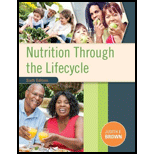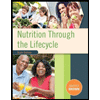
Concept explainers
To mention: Various causes of engorgement.
Introduction: Chronic mastitis is a breast disease that leads to prolonged inflammation. This disease occurs in the case of a mother who avoids breastfeeding. Breastfeeding is the most important and natural way to feed a newborn baby. Mother’s milk provides all the nutrition and immunity to the baby, which is needed during the first six months. Breastfeeding satisfies their hunger and thirst, and provides the proper amount of proteins, minerals, and immunity to the child, which helps to deal with the environment.
Explanation of Solution
Person B was pregnant at the age of 29 and during her pregnancy she had reported experiencing breast enlargement. After two hours of postpartum, her newborn was put to the breast and the infant latched well according to the mother. The infant was nursed over the initial 3-4 days of postpartum in every two hours. Person B was noticed with heavy breast during the third day of postpartum and gradually, she felt painful engorgement by the fourth day of postpartum. During this time, she also reports painful, burning sensation and cracks in her nipples. Due to breast engorgement, the infant is unable to latch properly to the breast. This makes the infant irritable. Person B consulted a lactation consultant and follows engorgement management. On the fifth day, the engorgement caused discomfort. The nipples of Person B became more cracked and painful because the vigorous latching of the infant. In the case of the infant, all the symptoms show about the adequate intake of nutrition. By the seventh day of postpartum, Person B had mastitis and consulted a lactation consultant for treatment. By the fourteenth day, her symptoms became very less and she felt much better. During the third week, while feeding the infant, she still had inflammation, a healing crack, and still some symptoms of chronic mastitis were present.
Again, she consulted the lactation consultant who helped Person B to position the infant in a comfortable way that mostly allows the drainage of the inflamed area and recommends her to pump the affected side to relieve the discomfort during breastfeeding. Then, Person B continued to show the signs of oversupply like breast feeling full after feeding and excess leakage of milk between feedings. Her lactation consultant provided techniques to decrease the overproduction of milk. After 10 days of burning pain in the nipples, Person B is treated with fluconazole for a yeast infection. Again after the seventh week of postpartum, Person B consulted the lactation consultant to report about another mastitis condition. Her consultant prescribed dicloxacillin for treatment. During the eighth week of postpartum, her mastitis condition resolved but the pain was still present in her nipples. Also, she is improving from mastitis condition.
In this case study, the causes of engorgement in breasts of Person B are as follows:
- Instability between the demand and the supply of breast milk
- Excess production of breast milk
- Improper breastfeeding techniques
- Infrequent or ineffective removal of milk from the breast
Want to see more full solutions like this?
Chapter 7 Solutions
Nutrition Through the Life Cycle (MindTap Course List)
- Which of these fetal presentations is the easiest for vaginal birth? complete breech vertex occiput anterior frank breech vertex occiput posteriorarrow_forwardAlex on her 12 weeks gestation with her third baby sough consultation to a nurses clinic for observation. She has a history of spontaneous abortion and is spotting. She told the nurse she had profuse then minimal vaginal bleeding. with passage of placenta with embryonic sac and slight uterine cramping. On examination the physician on duty determines that her cervix is closed. The nurse would think that the client is exhibiting signs of: Septic abortion Incomplete abortion Complete abortion Missed abortionarrow_forwardNarciso presents requesting hormonal contraception. She researching her options on the Web and become confused by the large variety of OC pills available, including monophasic, multitask, and progesterone only. She added how the pill prevents pregnancy and why the variety of preparations Which of the following the primary mechanism by which prevent pregnancy? Including lymphocytic endometritis Including endometrial atrophy Increasing cervical mucus viscosity Inhibiting serum luteinizing hormone (LH) levels Inhibiting serum follicle-stimulating hormone (FSH) levelsarrow_forward
- Sherrise is a sexually active college student. OnSaturday night, she has unprotected sex with her boyfriend.On Tuesday morning, she experiences the twinge of midcyclepain that she typically feels when she is ovulating.This makes Sherrise extremely anxious that she might soonlearn she is pregnant. Is Sherrise’s concern valid? Why orwhy not?arrow_forwardLatonia is pregnant. Her doctor told her that the baby has developed enough that it can now live outside of the womb. Right now, Latonia is most likely in the ______period of pregnancy. a) fetalb) teratogenc) embryonicd) germinalarrow_forwardQuestion: Can you give an HEALTH TEACHING for the pregnant patient with HIV? that is easier for them to understand. Title: Care of pregnant clients with Human Immunodeficiency Virus Focus Area: Obstetric Nurse Station Margerie Ramos, a 32-year-old female, who, on her 34th week of pregnancy was transferred to the hospital after coming from a prenatal clinic and reported to be experiencing continuous regular contractions for almost 2 days. This is her third pregnancy. The labor and delivery team were planning to admit her to observe and monitor her baby through a fetal Non-Stress Test and to exclude complications associated with preterm labor. The patient previously agreed to a scheduled repeat C-section since she already had two prior ones. Upon admission, the patient verbalized, “I'm cold, I feel so hot.” Temperature was taken, T=38.5 C. She also reported to be having diarrhea for 3 days now. She weighs 55kgs and has a BP of 120/80 mmHg. She was also observed to be coughing a few…arrow_forward
- A 22-year-old multigravida at 22 weeks of gestation complains during a routine prenatal visit of 5-lb weight gain and vaginal discharge. Her assessment included a normal speculum examination. The physician examines the patient’s abdomen and finds that the tip of the uterus is 20 cm above the symphysis pubis. Which option refers to the upper rounded portion of the uterus? Isthmus Fundus Bladder Corpusarrow_forwardMrs. Nena wants to know when her baby will be bora. Her last menstrual period began October 22, 2019. The nurse calculates her delivery date to be: a. May 22, 2020 b. July 22, 2020 c. May 29, 2020 d. July 29, 2020arrow_forwardTesticular cancer is the most common form of cancer among men ages 15 to 34. The affected testis is removed in a procedure called an orchiectomy. However, fertility is rarely changed by this surgery. Discuss why.arrow_forward
- DONT ANSWER THE SAME ANSWER ANYMORE. PLEASE INCLUDE REFERENCES I NEED IT. MAKE IT DETAILED IN ONE PARAGRAPH ONLY. I DONT NEED A DESCRIPTION OF MASLOWS ITSELF OR NCP. I WANT JUSTIFICATION/EXPLANATION OF NURSING DX BELOW THAT IS CONNECTED TO MASLOWS. EXPLAIN PROPERLY DX: Risk for uterine infection related to abnormal uterine bleeding as evidenced by endometrial polyp Why there could be risk for uterine infection? in relation to the dxarrow_forwardDonita Rose, a 14-year old high school graduate, her first pregnancy on her 20 weeks gestation sought consultation at your clinic for her initial prenatal visit. History revealed that this is an unpleasant pregnancy with her 3rd boyfriend who broke up with her upon hearing about the pregnancy. During the 13-months of her pregnancy, she had several episodes of nausea and vomiting for which she noticed apparent weight loss. Which of the following reasons could lead to a mortality of Donita Rose? a. Young age and first pregnancy b. Domestic violence c. Lack of competent health care provider d. Weak referral systemarrow_forwardMrs. Vanessa Narciso, 19y/o, Gravida 1, had a normal spontaneous delivery. Seven minutes after the delivery under pudendal anesthesia, Mrs. Vanessa has not completed the third stage of labor. The uterus is discoid and firm, no bleeding is evident. Nurse Marina, nurse midwife should: Manually remove the placenta Remove placenta from inverted uterus Gently massage the uterus and wait Pull the cord vigorously Invert the uterusarrow_forward
 Nutrition Through the Life Cycle (MindTap Course ...Health & NutritionISBN:9781305628007Author:Judith E. BrownPublisher:Cengage Learning
Nutrition Through the Life Cycle (MindTap Course ...Health & NutritionISBN:9781305628007Author:Judith E. BrownPublisher:Cengage Learning Nutrition Through The Life CycleHealth & NutritionISBN:9781337919333Author:Brown, Judith E.Publisher:Cengage Learning,
Nutrition Through The Life CycleHealth & NutritionISBN:9781337919333Author:Brown, Judith E.Publisher:Cengage Learning, Anatomy & PhysiologyBiologyISBN:9781938168130Author:Kelly A. Young, James A. Wise, Peter DeSaix, Dean H. Kruse, Brandon Poe, Eddie Johnson, Jody E. Johnson, Oksana Korol, J. Gordon Betts, Mark WomblePublisher:OpenStax CollegeUnderstanding Health Insurance: A Guide to Billin...Health & NutritionISBN:9781337679480Author:GREENPublisher:Cengage
Anatomy & PhysiologyBiologyISBN:9781938168130Author:Kelly A. Young, James A. Wise, Peter DeSaix, Dean H. Kruse, Brandon Poe, Eddie Johnson, Jody E. Johnson, Oksana Korol, J. Gordon Betts, Mark WomblePublisher:OpenStax CollegeUnderstanding Health Insurance: A Guide to Billin...Health & NutritionISBN:9781337679480Author:GREENPublisher:Cengage




